Study Tour to a Model Hospital in Tanzania
From October 6 to October 12, 2024, a study tour took place in Tanzania with 16 healthcare professionals from Zimbabwe, including officials from the Quality Assurance and Patient Safety (QAPS) directorate of the Ministry of Health and Child Care (MOHCC), management from target hospitals. The timing coincided with a JICA Regional Seminar in Tanzania, part of the JICA technical cooperation “Promotion of Dissemination of Quality Improvement of Health Services through 5S-KAIZEN-TQM in Africa Region (Regional Program)”. This allowed two QAPS members to participate in the seminar, gaining valuable insights from other African countries.
Through participation in the seminar, visits to model hospitals implementing 5S-KAIZEN-TQM Approach, and discussions with Tanzanian hospital staff, participants gained ideas for feasible activities of 5S-KAIZEN-TQM Approach in Zimbabwe. They also learned about the roles hospital management should play in supporting continuous Quality Improvement (QI) efforts.
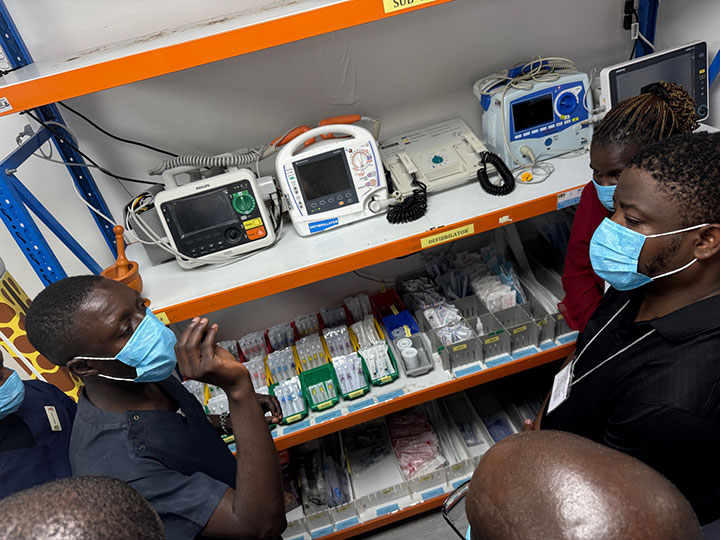
A nurse at NICH of Muhimbili National Hospital explaining the use of 5S tools in inventory management(left side of the photo)
Participation as Observer in Regional Seminar
Two members from QAPS directorate joined as observers in the JICA Regional Seminar held in Arusha, Tanzania, on October 7 and 8. During the seminar, representatives from seven African countries (Benin, Djibouti, Ethiopia, Madagascar, Malawi, Senegal, and Tanzania) presented on their 5S-KAIZEN-TQM activities, achievements, and challenges. Zimbabwean participants actively engaged in discussions, inquiring about strategies to enhance sustainability through motivation mechanisms practiced in other countries.
On the second day, presentations focused on Tanzania’s health system, implementation structure of 5S-KAIZEN-TQM Approach, and good practices in Tanzania’s hospitals. Afterward, the QAPS members traveled to Dar es Salaam, where they joined the other Zimbabwean participants to share insights from the seminar.
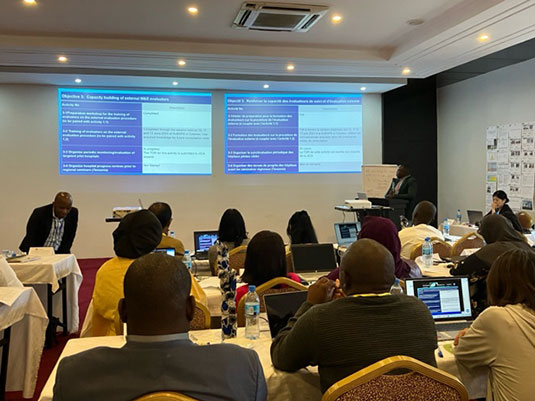
Presentation on QI progress from Benin, one of the target countries of the Regional Program
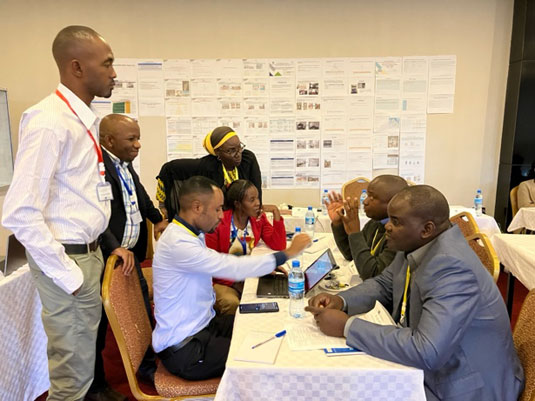
Zimbabwean participants (two people on the right side), engaging in a group discussion with Tanzanian participants about the challenges and possible solutions for sustaining QI activities in hospitals
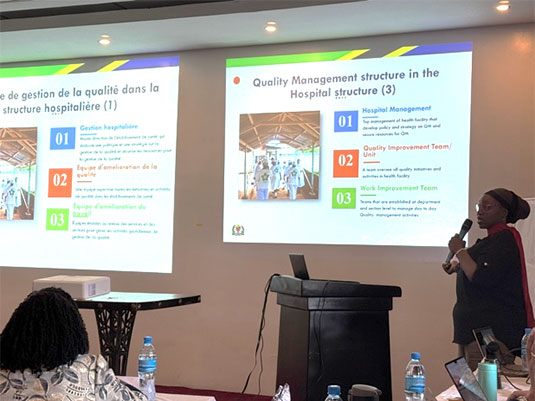
An official from the Ministry of Health of Tanzania presenting on the hospital quality management structure
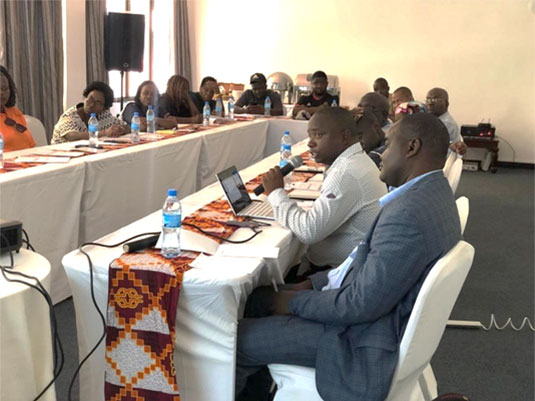
A QAPS staff sharing insights from the Regional Seminar with other participants in Dar es Salaam
Visits to Model Hospitals in Tanzania
On October 10, participants visited Mbeya Zonal Referral Hospital (MZRH), followed by Muhimbili National Hospital (MNH) on October 11. At each hospital, one of the Zimbabwean participants presented the implementation status and challenges of 5S-KAIZEN-TQM Approach at their own hospital. This was followed by a presentation from the host hospital’s Quality Improvement Unit (QIU) on their structure of QI activities, the implementation of 5S-KAIZEN-TQM Approach, best practices, and challenges.
The participants observed 5S and KAIZEN activities in three departments of each hospital, mechanisms for sustainability, support for QI activities from hospital management, and good practices.
The visits concluded with discussions on the role of management in sustaining QI efforts, covering points such as encouraging staff participation, organizing motivational events, securing budgets through optimizing hospital spending, and continuous training and monitoring let by QIU.
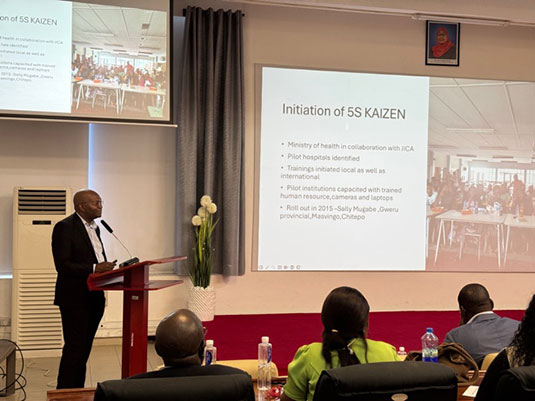
At MNH, Chief Medical Officer of Sally Mugabe Central Hospital presenting QI activities being conducted in his hospital
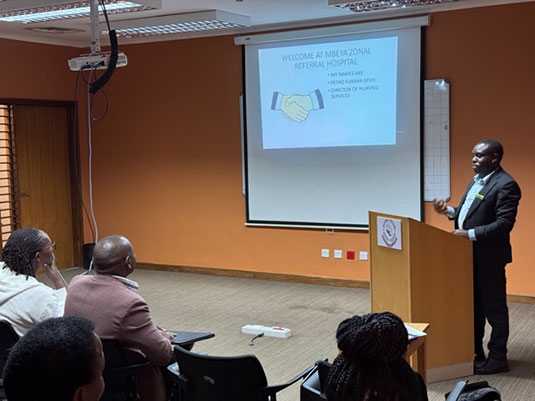
A QIU member presenting examples of QI activities and factors facilitating their implementation at MZRH
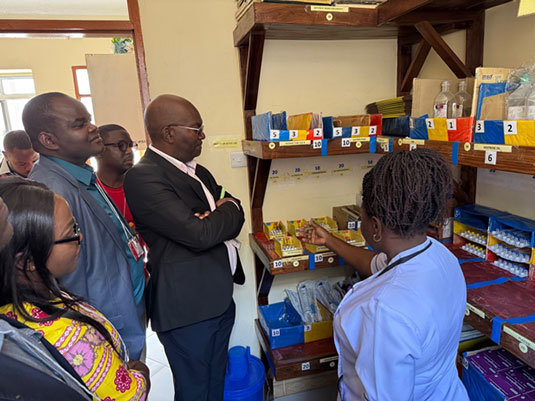
A nurse (pictured on the right) in the pediatric ward at MZRH explaining the daily inventory management method using a combination of 5S-tools
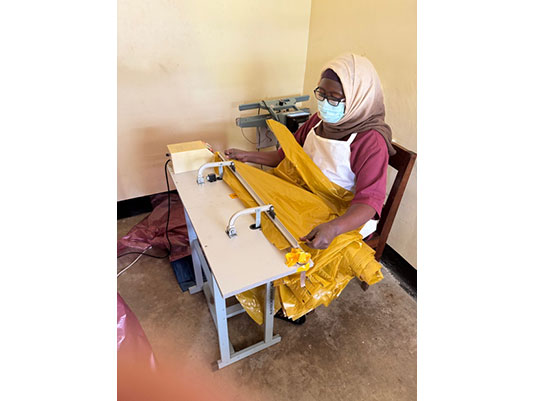
MZRH is producing bin-liners in-house, ensuring an adequate supply of color-coded bags needed for proper waste separation. This approach has reduced costs compared to purchasing commercial products.
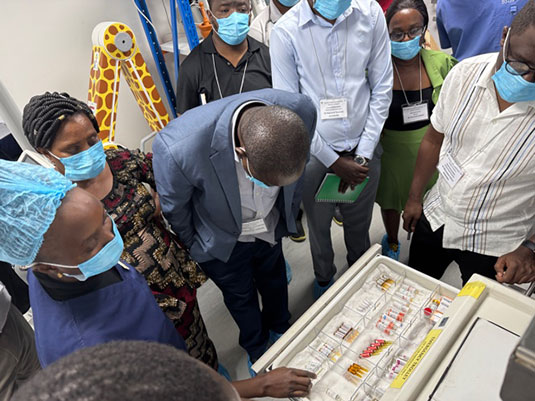
A nurse in NICU at MNH explaining the method for properly managing emergency cart medications using 5S tools
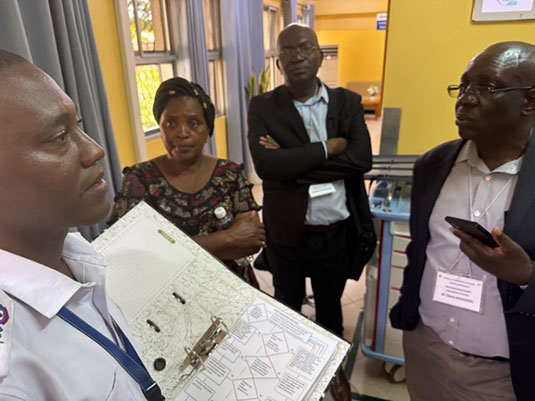
A nurse (pictured on the left) at MNH explaining strategies for the continuous implementation of KAIZEN activities and support from the QIU
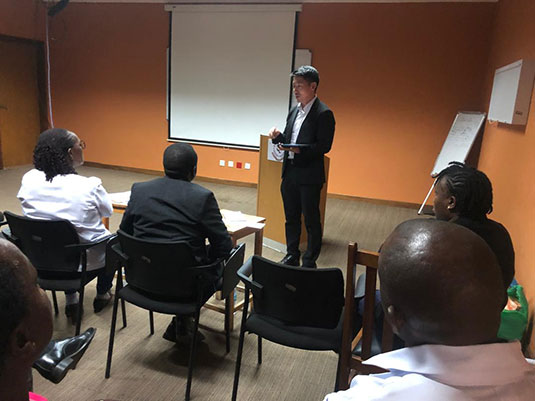
A Japanese expert facilitating discussions following departmental visits at MZRH
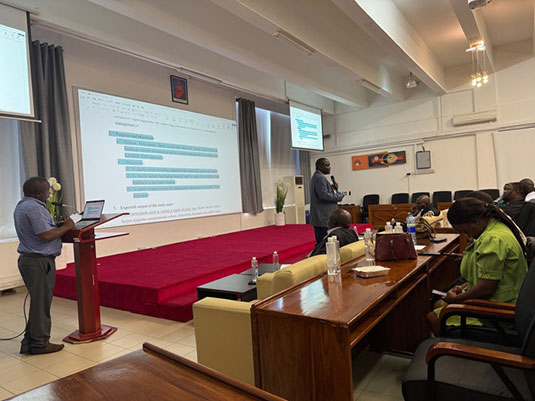
Director of QAPS Directorate (center in the photo) and the directorate staff (left in the photo) conducting an overall summary of the study tour at MNH
Utilization of Lessons Learnt from the Study Tour
After returning from the study tour, ZIM-QIPS received a draft report from each participant. The reports indicated that they learned about the factors necessary for effectively implementing the 5S-KAIZEN-TQM Approach and what managers should focus on, with evidence that the personal goals set before the tour were generally achieved. Furthermore, the report included activity plan that each participant developed based on their learnings from the tour, outlining the activities they should implement in their respective facility moving forward.
As a project, we will continue to support the finalization of each participant's activity plan, monitor their implementation status, and provide necessary technical assistance, ensuring that the insights gained from this study tour are effectively applied in each hospital.
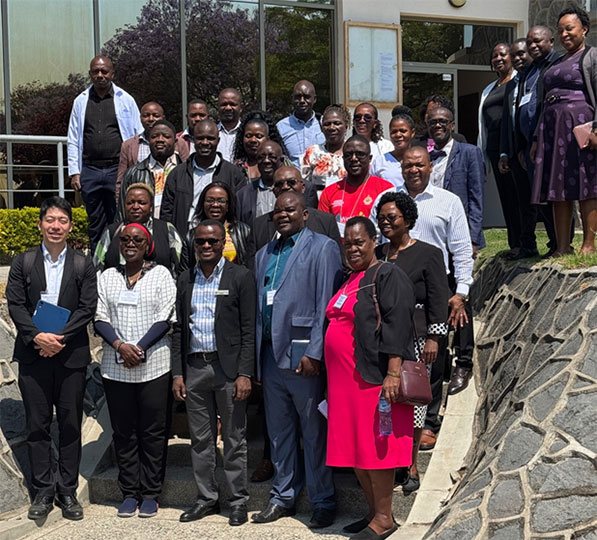
Group photo with Zimbabwean participants and hospital staff at MZRH
